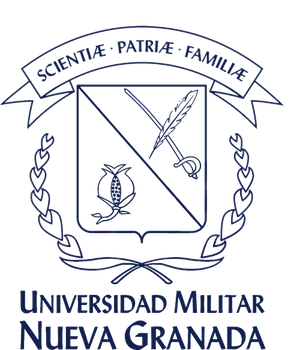Monotonic behavior of asphalt mixtures MDC-2 added with rubber-leather waste
Abstract
The goal of this research was to establish a monotonic behavior of MDC-2 asphalt mixtures with rubber-leather added regarding typically manufactured asphalt mixtures taking into account the of maximum load and twist parameters. We began the study by specifying the optimum asphalt percent for typical mixtures (bitumen 60/70) and mixtures with rubber-leather added of 1, 2, 3 and 4 percent of moist asphalt, then the Marshall test is run by getting flow stability results at press for each sample. From results we could infer that rubber-leather waste entirely improves the mixture mechanical properties, reflecting an increase of the resistance of asphalt mixtures compared to typical manufactured ones.Downloads
References
Soon-Jae, Lee; Chandra K, Akisetty; Serji, Amirkhanian. (2007) “The effect of crumb rubber modifier (CRM) on the performance properties of rubberized binders in HMA pavements”; Department of Civil Engineering; Clenson University; United States.
Joskowicz, Pablo; Villegas, Carlos; Arias, Lourdes; Escobar, José; Landa, Franklin; Corredor, Gustavo; Noriega, Johannes. (2010) “Ligantes asfálticos Venezolanos modificados con polvo de neumáticos fuera de uso”; Universidad Central de Venezuela; Venezuela.
George B. Way P.E.; Kamil E. Kaloush; Krishna Prapoorna Biligiri. (2011) Asphalt-Rubber Standard Practice Guide Prepared for the Rubber Pavements Association Final Report, Arizona State University Estados Unidos, October 17.
Botasso, Gerardo; Rebollo, Oscar; Cuattrocchio, Adrián; Soengas, Cecilia. (2008) “Ejecución de pavimento con mezcla asfáltica densa con utilización de caucho reciclado”; LEMaC Centro de Investigaciones Viales; Universidad Tecnológica Nacional Facultad Regional La Plata; Argentina.
Rodríguez, Karina. (2005) “Mejora de una mezcla asfáltica drenante con adición de caucho e icopor”; programa de Ingeniería Civil, Facultad de Ingeniería; Pontificia Universidad Javeriana, Bogotá.
Montejo, Alfonso. (2001) Ingeniería de pavimentos para carreteras, Segunda edición; Universidad Católica de Colombia, Bogotá D.C.
Figueroa, Sofía; Sánchez Arnulfo; Reyes Fredy. (2007) “Caracterización física de un asfalto modificado con poliestireno y llanta triturada”, Revista 009 Épsilon, JulDic. P. 41-55 Universidad de la Salle, Bogotá.
Liu, Shutang; Cao, weidong; Fang, Jianguo; Shang, Shujie. (2009) “Variance analysis and performance evaluation of different crumb rubber modified (CRM) asphalt”, Construction and building materials; Shandong University; China.
Zaman, A; Fricke, L; Beatty, C. (2000) “Rheological properties of Rubber-modified Asphalt”; Journal of transportation engineering, Florida Department of transportation, Florida, Estados Unidos.
Huang, Baoshan; Mohammad, Louay; Graves, Philip; Abadie, Chris. (2008) “Lousiana Experience with Crumb-Rubber Modified Hot-Mix Asphalt Pavement”; Lousiana Department of transportation and Development; Louisiana, Estados Unidos.
Jeong, Kyu-Dong; Lee, Soon-Jae; Amirkhanian, Serji N.; Kim, Kwang. (2010) “Interaction effects of crumb rubber modified asphalt binders”; Construction and Building materials.
Xiao, Feipeng; Amirkhanian, Serjin. (2008) “Laboratory Investigation of Moisture Damage in Rubberized Asphalt Mixtures Containing Reclaimed Asphalt Pavement”; Department of Civil Engineering; Clemson University, South Carolina, Estados Unidos.











